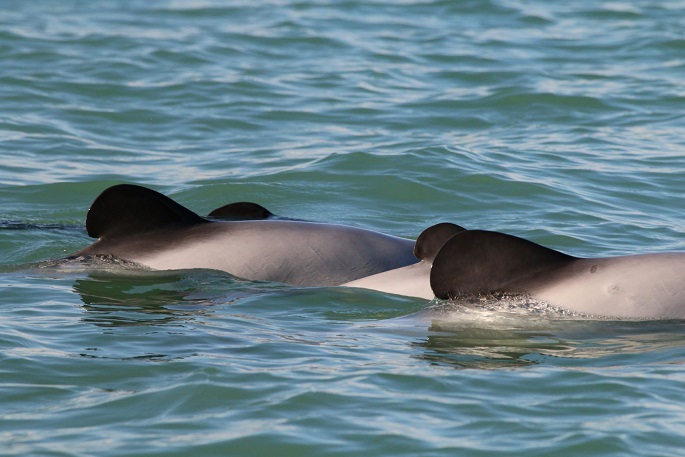The world’s rarest marine dolphin, New Zealand’s Māui, is getting younger.
The tiny population – only about 54 Māui dolphins remain – lives off the west coast of the North Island.
Once seen from Cook Strait to north of Kaipara, the dolphins’ range is now considerably smaller, with most sightings between Muriwai and Raglan.
The creatures' median age dropped by about a year over the course of a decade, according to research from the University of Auckland – Waipapa Taumata Rau, Oregon State University and University of California Los Angeles.
It could be good news: a population with younger dolphins will produce more calves than an older population, ultimately increasing the population size, which is vital for the dolphins' future.
“The population may be getting younger because individuals born after 2008, the year a marine sanctuary was introduced off the west coast of the North Island, have better chances of survival, since they are less likely to be accidentally caught in fishing nets,” suggests Professor Rochelle Constantine. However, it’s also possible that older dolphins aren’t living to expected maximum ages of about 20 years. One potential upside of the population shift is that younger adult dolphins are likely to be more healthy. Future research could gauge if the population is less vulnerable to diseases such as Brucellosis and Toxoplasmosis. The latter is a parasite infection, spread through freshwater run-off contaminated by cat faeces, which is a known cause of death for the species. “By determining the dolphins’ epigenetic clock, where DNA methylation is analysed to estimate animals’ ages, we are now finally able to determine the age of living Māui dolphins,” says Dr Keith Hernandez, lead author of the study. The study revealed a shift from a median age of eight-to-nine years to a younger population aged seven-to-eight. Skin samples from live and beach-cast dolphins were collected by Waipapa Taumata Rau, University of Auckland researchers or the Department of Conservation via biopsy dart and analysed at Oregon State University and the University of California. “Prior to this study, the only way to age dolphins was via growth rings in a tooth collected from dead dolphins,” says Rochelle.
“Our long-term genetic archive and teeth from dead dolphins were critical to the success of this work; we can now age all living dolphins.” Short lifespans compared to other dolphins and whales, late maturity and low reproduction rates slow any population gains by Māui dolphins. With distinctive grey, white and black markings, Māui and Hector’s dolphins are the only New Zealand dolphins with a flat, black dorsal fin that looks like one of Mickey Mouse’s ears. Other dolphins usually have a more pointed fin. Public reports of Māui dolphin sightings are important and should be reported to the Department of Conservation or by calling 0900DOCHOT (0800 362 468) immediately to report a stranded dolphin. The research was published in the journal Ecology and Evolution. Learn more about the use of animals in research and teaching at the University of Auckland.



0 comments
Leave a Comment
You must be logged in to make a comment.